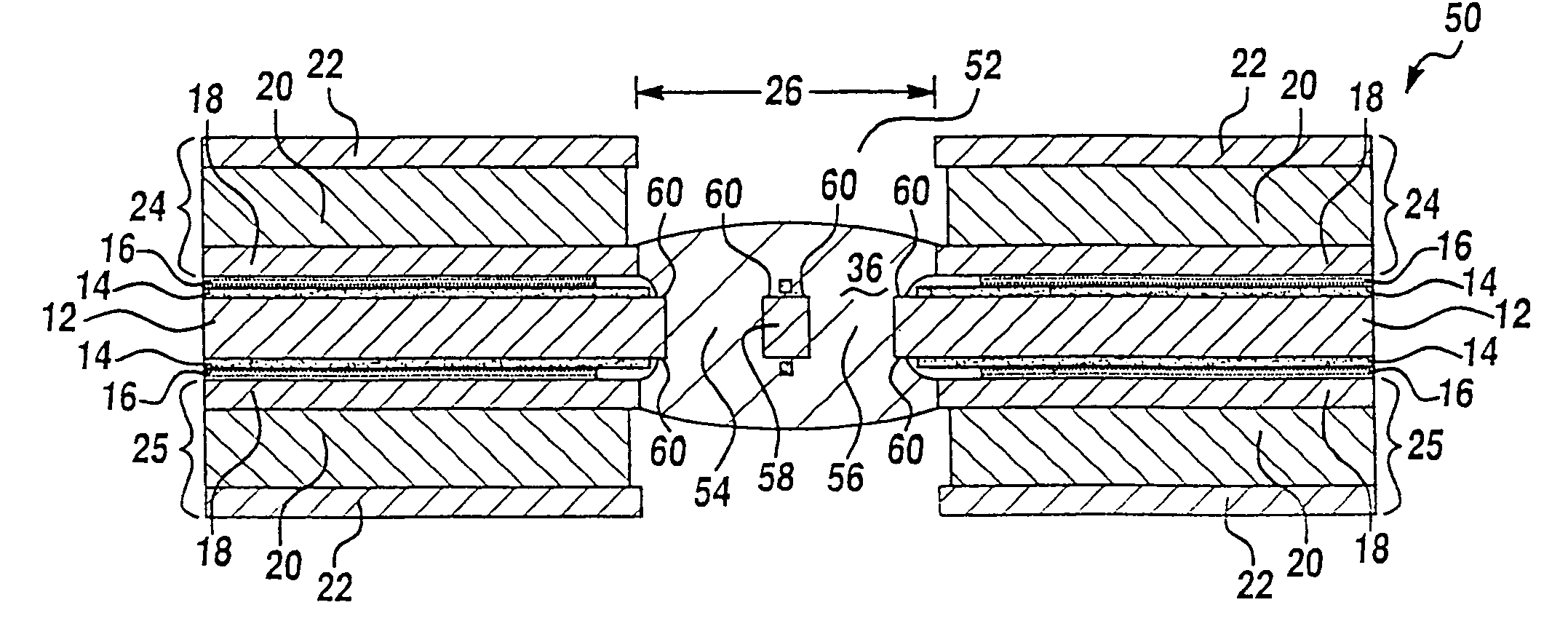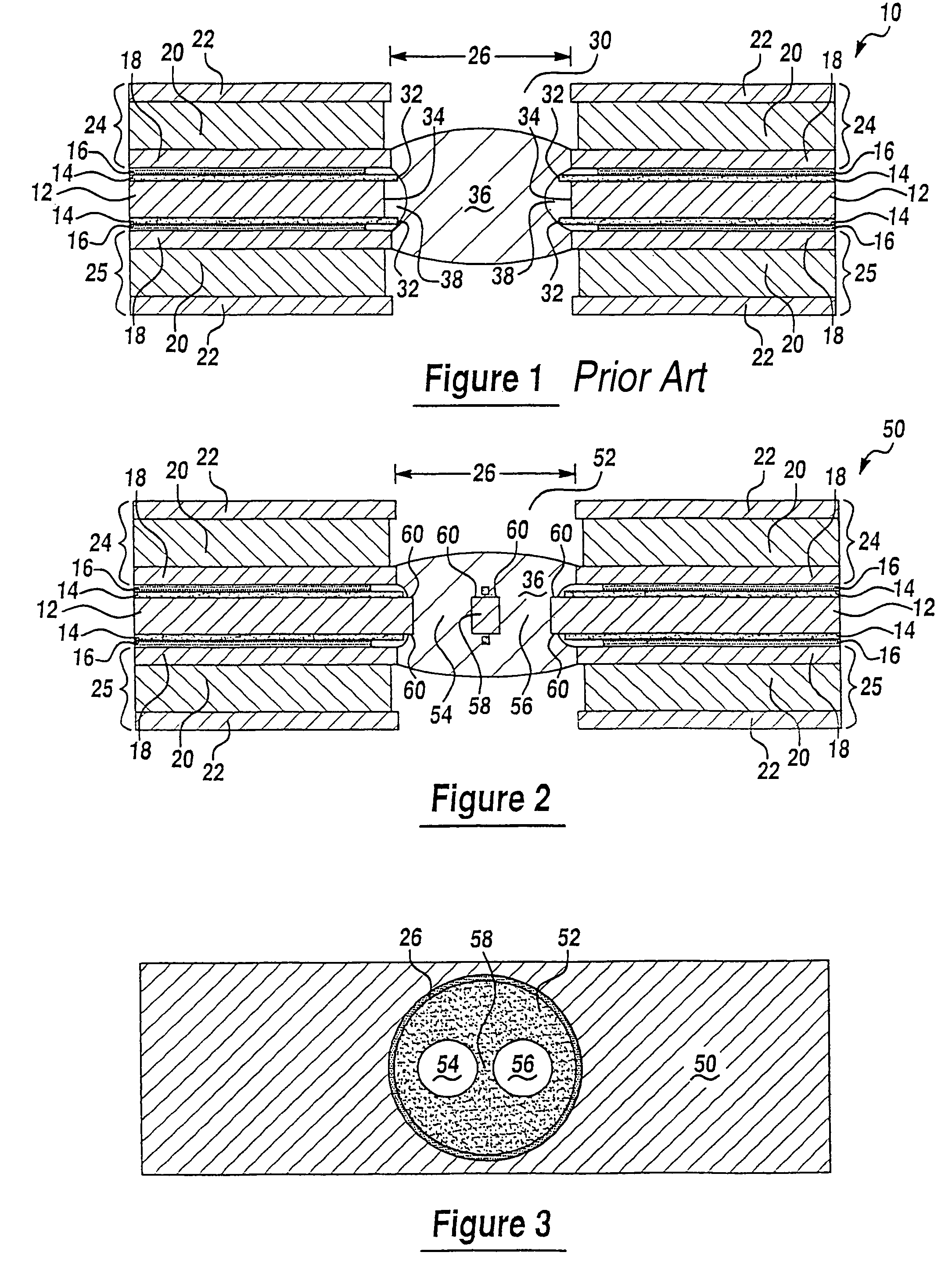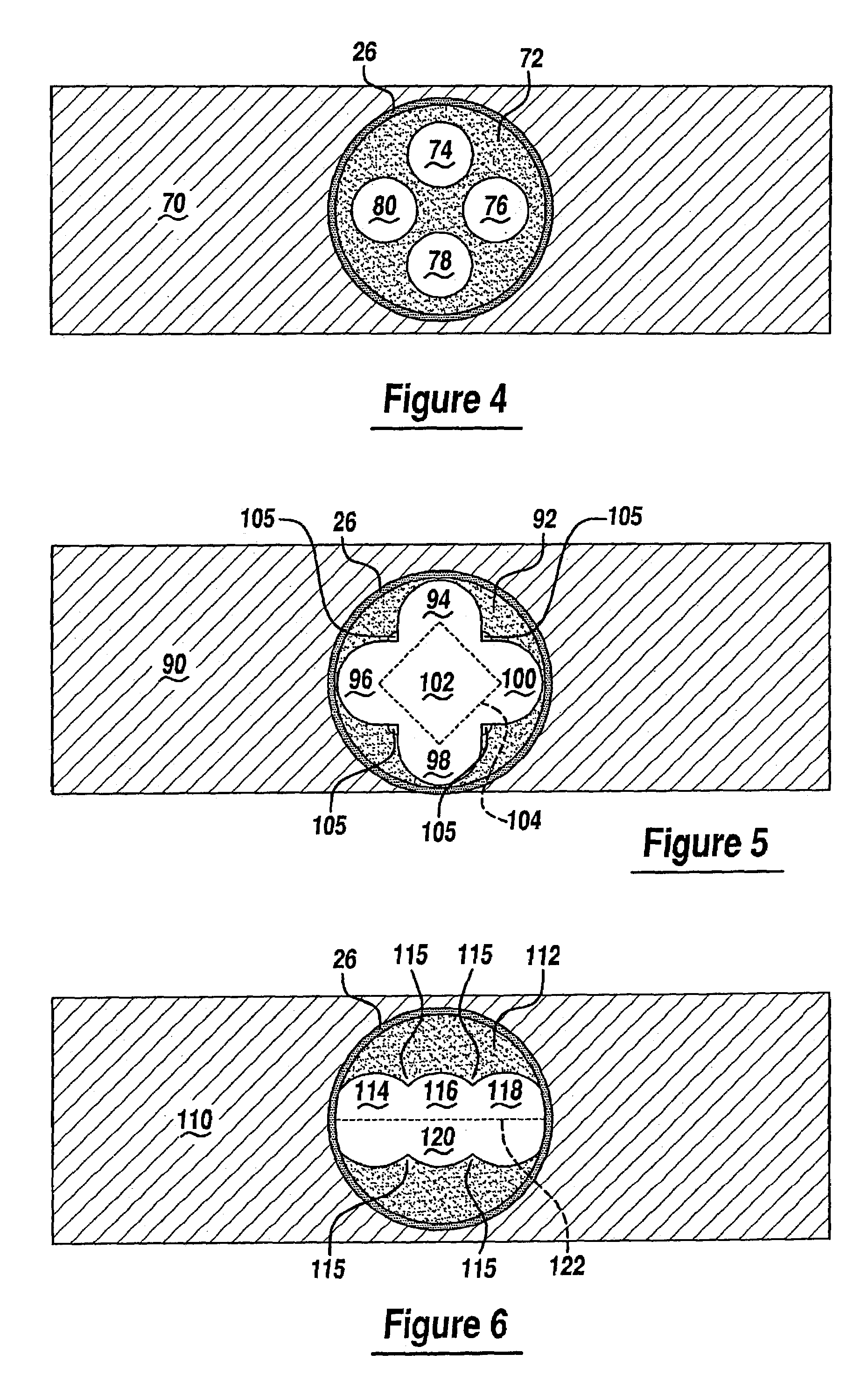Electrical circuit board and a method for making the same
a technology of electrical circuit board and circuit board, which is applied in the direction of printed circuit, cable/conductor manufacturing, printed element electric connection formation, etc., can solve the problems of defective portion or region of the circuit board, the failure of the solder to electrically connect the desired layers of circuitry and/or components together, and the failure of the solder to consistently and reliably achieve the effect of high reliability and solderability
- Summary
- Abstract
- Description
- Claims
- Application Information
AI Technical Summary
Benefits of technology
Problems solved by technology
Method used
Image
Examples
second embodiment
[0032]Referring now to FIG. 4, there is shown a circuit assembly 70 made in accordance with the teachings of the present invention. Circuit assembly 70 is substantially identical to circuit assembly 50 with the exception that via or aperture 52 has been replaced with via or aperture 72.
[0033]Via or aperture 72 includes four holes or apertures 74, 76, 78 and 80 which are formed within dielectric layers 14 and core 12. Apertures 74, 76, 78 and 80 are formed by a conventional machining process such as drilling, laser ablation, routing, stamping, cutting or punching and are formed in relative close proximity to each other. In alternate embodiments, apertures 74–80 may be formed by an etching or chemical milling process. When apertures 74–80 are machined, the relatively brittle dielectric coating 14 chips, flakes or otherwise separates off of the end portions or corner regions of core 12, in a manner substantially similar to that described in reference to circuit assembly 50. The formati...
third embodiment
[0034]Referring now to FIG. 5, there is shown a circuit assembly 90 made in accordance with the teachings of the present invention. Circuit assembly 90 is substantially identical to circuit assembly 70 with the exception that via or aperture 72 has been replaced with via or aperture 92.
[0035]Via or aperture 92 includes four intersecting and generally circular holes 94, 96, 98, and 100 which interconnect and / or overlap to form one hole or aperture 102 within dielectric layers 14 and core 12. Apertures 94, 96, 98, and 100 are formed by a conventional machining process, such as drilling, routing, stamping, cutting, punching, or laser ablation and are formed in a substantially “square” arrangement as indicated by dashed line 104 (e.g., the center of each aperture 13 located at the four corners of square 104). In alternate embodiments, apertures 74–80 may be found by an etching or chemical milling process. When apertures 94–100 are machined, the relatively brittle dielectric coating 14 c...
fourth embodiment
[0036]Referring now to FIG. 6, there is shown a circuit assembly 110 made in accordance with the teachings of the present invention. Circuit assembly 110 is substantially identical to circuit assembly 90 with the exception that via or aperture 92 has been replaced with via or aperture 112.
[0037]Via or aperture 112 includes three intersecting and generally circular holes 114, 116, and 118 which interconnect and / or overlap to form one hole or aperture 120 within dielectric layers 14 and core 12. Apertures 114, 116, and 118 are formed by a conventional etching or machining process, such as drilling, routing, stamping, cutting, punching or laser ablation and are formed in a substantially linear arrangement as indicated by dashed line 122. When apertures 114–118 are machined, the relatively brittle dielectric coating 14 chips, flakes or otherwise separates off of the end portions or corner regions of core 12, in a manner substantially similar to that described with reference to circuit a...
PUM
| Property | Measurement | Unit |
|---|---|---|
| conductive | aaaaa | aaaaa |
| perimeter | aaaaa | aaaaa |
| electrical power | aaaaa | aaaaa |
Abstract
Description
Claims
Application Information
 Login to View More
Login to View More - R&D
- Intellectual Property
- Life Sciences
- Materials
- Tech Scout
- Unparalleled Data Quality
- Higher Quality Content
- 60% Fewer Hallucinations
Browse by: Latest US Patents, China's latest patents, Technical Efficacy Thesaurus, Application Domain, Technology Topic, Popular Technical Reports.
© 2025 PatSnap. All rights reserved.Legal|Privacy policy|Modern Slavery Act Transparency Statement|Sitemap|About US| Contact US: help@patsnap.com



